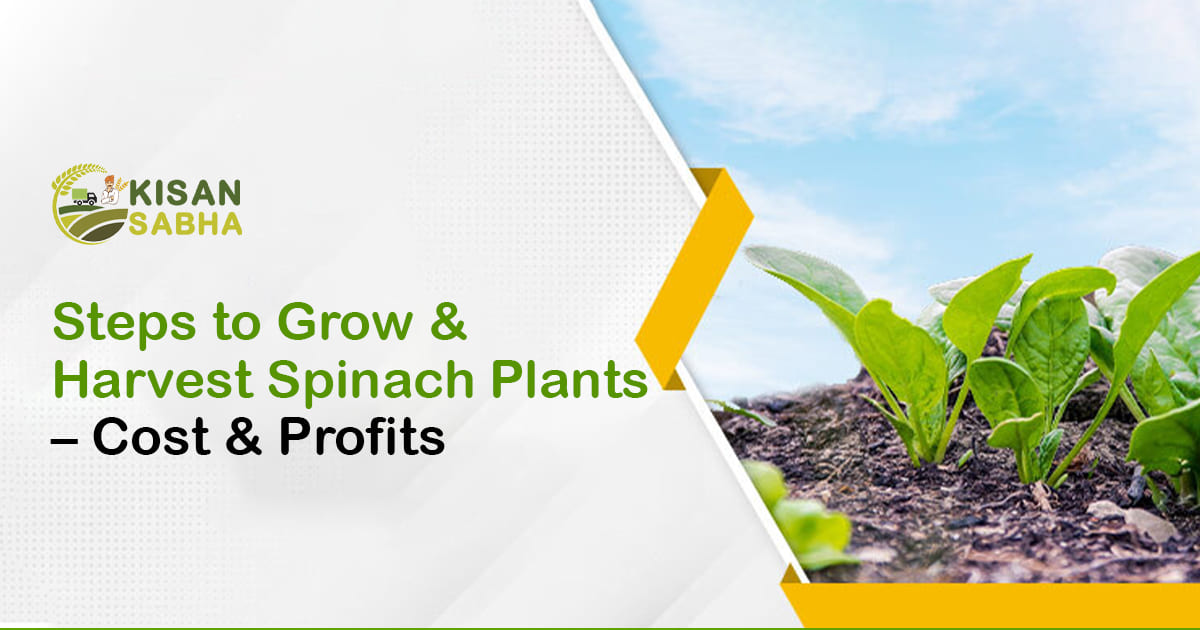Spinach is a versatile leafy green vegetable that is packed with essential nutrients. Whether you’re a seasoned gardener or a beginner, growing spinach can be a rewarding experience. Not only does it provide you with fresh, organic produce, but it can also be a profitable venture. In this article, we will explore the steps to grow and harvest spinach plants, along with the associated costs and potential profits.
Preparing for Spinach Cultivation
1. Choosing the Right Variety:- Various spinach varieties are available, each with its own growth requirements and flavor profiles. Consider factors such as climate, soil type, and personal preferences when selecting the variety.
2. Selecting an Ideal Location:- Spinach thrives in cool weather conditions, so choose a location that receives partial shade during hot summer months. Ensure the soil is well-drained and rich in organic matter.
3. Soil Preparation:- Removing weeds, rocks, and debris prepares the soil. Add compost or well-rotted manure to improve soil fertility and drainage. Test the soil pH and adjust it to the optimum range for spinach growth.
Planting and Growing Spinach
1. Timing: Spinach can be grown in both spring and fall:- Sow seeds directly into the ground or transplant them indoors once the soil is workable. Ensure the soil temperature is around 40-75°F (4-24°C) for optimal germination.
2. Planting Spinach Seeds:- Sow spinach seeds about half an inch deep and one inch apart. Thin the seedlings to allow proper spacing for growth. Water the seeds gently to avoid displacing them.
3. Care and Maintenance:- Regularly water the spinach plants, providing about an inch of water per week. Mulch the soil to retain moisture and suppress weed growth. Monitor for common pests and diseases, and address them promptly. Fertilize as needed, following recommended guidelines.
4. Crop Rotation and Succession Planting:- To avoid soil depletion and pest buildup, practice crop rotation by planting spinach in different areas of your garden each year. Additionally, consider succession planting by sowing new seeds every few weeks to ensure a continuous harvest.
Harvesting and Post-Harvest Handling
1. Harvesting Spinach: Spinach leaves can be harvested when they reach the desired size, usually around 4-6 weeks after planting. Pick the outer leaves first, allowing the inner leaves to continue growing. Cut the leaves at the base or use a gentle twisting motion to avoid damaging the plant.
2. Post-Harvest Handling: After harvesting, gently wash the spinach leaves to remove any dirt or debris. Dry them thoroughly before storing or using them. Store spinach in a cool, dark place or refrigerate to maintain freshness.
Also Read:- Empowering Women in Agriculture: Nurturing Sustainable Food Systems
Costs and Profits
- Cost of Spinach Cultivation: The cost of growing spinach can vary depending on factors like location, scale of cultivation, and inputs used. Expenses may include seeds, soil amendments, irrigation, pest control measures, and labor. Also, keeping detailed records can help track expenses accurately.
- Potential Profits: Spinach is a popular vegetable with a consistent demand in the market. Selling directly to consumers through farmers’ markets, local grocery stores, or a Community Supported Agriculture (CSA) program can yield higher profits. Therefore, consider value-added options like packaged spinach, baby spinach, or selling to restaurants or food establishments.
- Marketing and Sales Strategies: Develop a marketing plan to reach your target audience effectively. Utilize social media platforms, local advertising, and word-of-mouth referrals to promote your spinach products. Establish relationships with potential buyers, such as chefs and local businesses, to secure consistent sales.
- Business Considerations: Look into local regulations and permits required for selling spinach commercially. Explore opportunities for collaborations with other farmers or join a cooperative to reduce costs and increase market reach. However, consider the benefits of organic or sustainable farming practices to attract health-conscious consumers.
Conclusion:
Growing and harvesting spinach can be a fulfilling and profitable endeavor. By following the steps outlined in this article, you can cultivate healthy spinach plants and enjoy a bountiful harvest. However, remember to keep track of costs and explore potential marketing avenues to maximize profits. Whether you’re a home gardener or an aspiring farmer, spinach cultivation offers a rewarding experience both in terms of fresh produce and potential financial gains.





